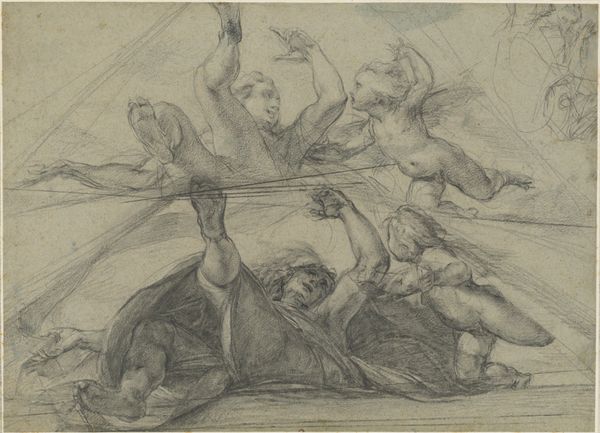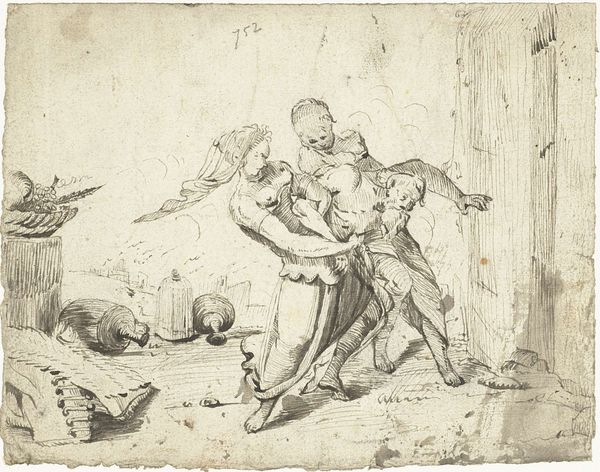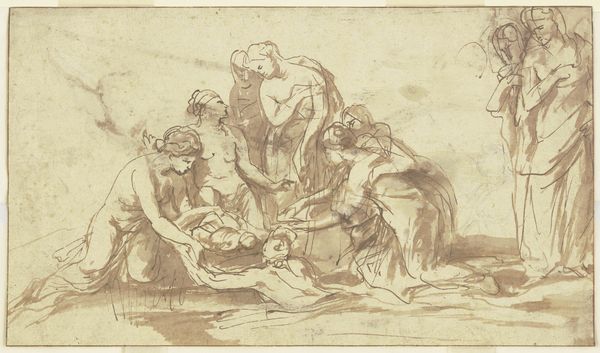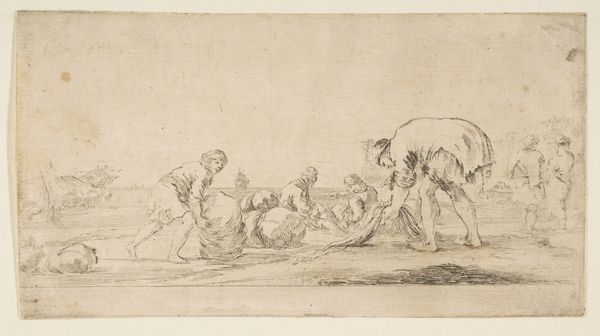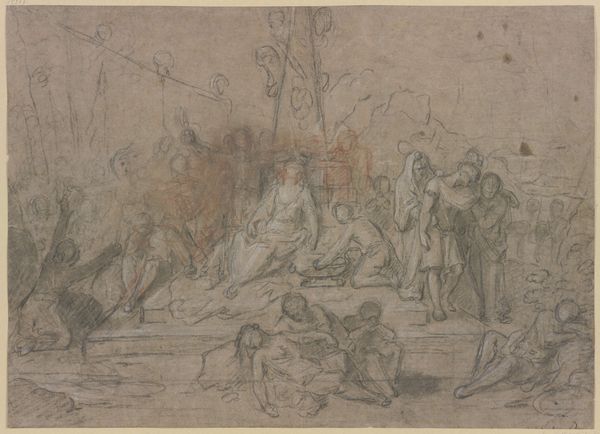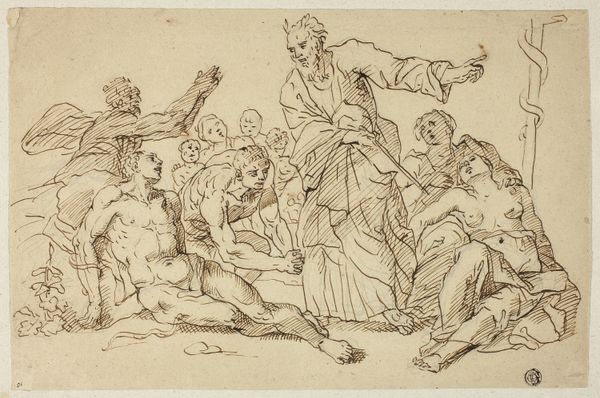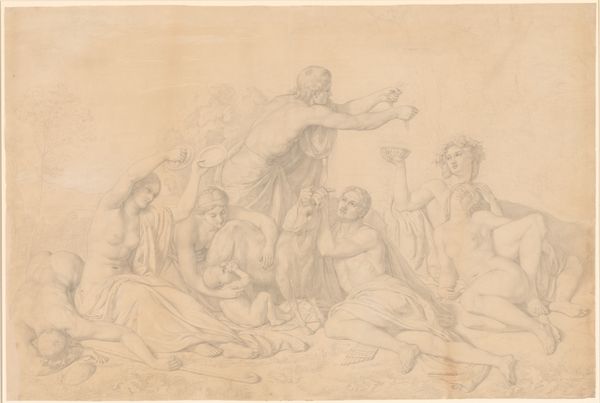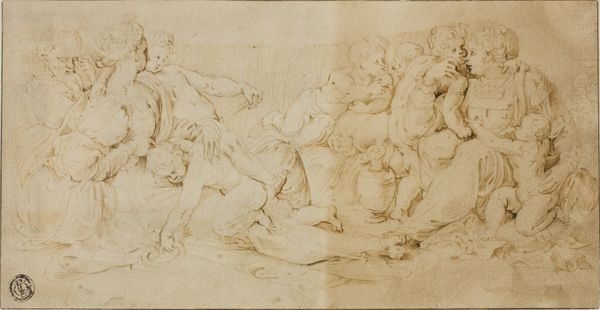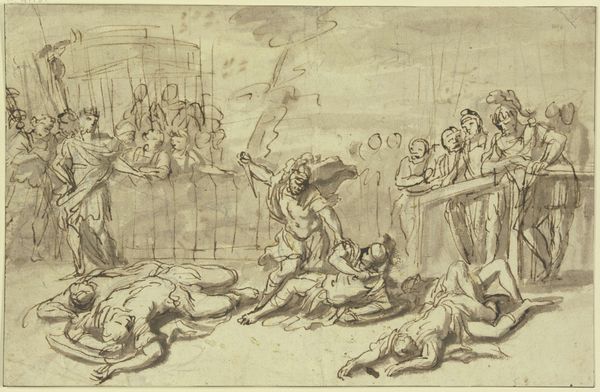
drawing, ink
#
drawing
#
narrative-art
#
baroque
#
pen sketch
#
figuration
#
ink
#
14_17th-century
#
history-painting
Copyright: Public Domain
Editor: This ink drawing, "The Death of Socrates," was created by Nicolas Poussin sometime between 1640 and 1650. I find the composition incredibly moving, full of dramatic tension. What do you see in this piece, considering its historical and cultural background? Curator: Well, it’s Poussin engaging with a loaded subject. Socrates' death was a political act, wasn't it? He was executed for challenging the Athenian establishment. Here, Poussin's drawing enters that political arena by choosing to depict the philosopher not as a solitary martyr but within a community, their grief and outrage palpable. How do you think Poussin wants the viewer to respond to that community? Editor: I imagine he wants us to see Socrates' death as a loss not just for him, but for Athens, for philosophy itself. The drawing portrays this collective sorrow so vividly. It makes you wonder about the impact on the culture at that time, or even how a piece like this comments on the artist's contemporary society. Curator: Precisely. Poussin lived in a time of immense social and political upheaval. Think about the role art played then, commissioned by powerful figures to express specific ideological positions. And how artists like Poussin navigated this world, using historical subjects to comment on their own times while managing powerful patronage. Considering this drawing is made of ink, I think it presents interesting insights on the distribution or repartitioning of art during this time. It provides art a greater chance to be known than other artworks that can be appreciated in particular and private environments. This also means it has great power, too, in influencing people's perspective. Editor: So, art was always more than just art - it was intrinsically linked to the political and cultural landscape. It really makes you think about the artist’s social responsibility. Curator: Exactly. And how our perception of that responsibility shapes our understanding of artworks like this one. It opens doors to discuss political meanings behind an artwork that one could easily miss when it's taken on its own. Editor: I'll definitely look at art with a fresh perspective moving forward. Curator: Likewise, this discussion illuminated how we sometimes miss what’s right in front of us when considering the political dimension of art.
Comments
No comments
Be the first to comment and join the conversation on the ultimate creative platform.

